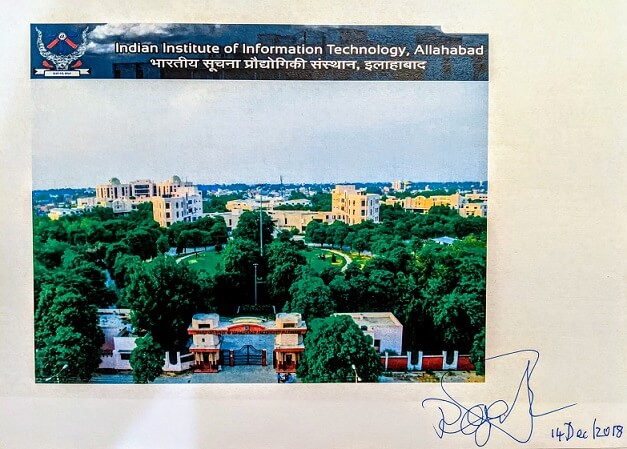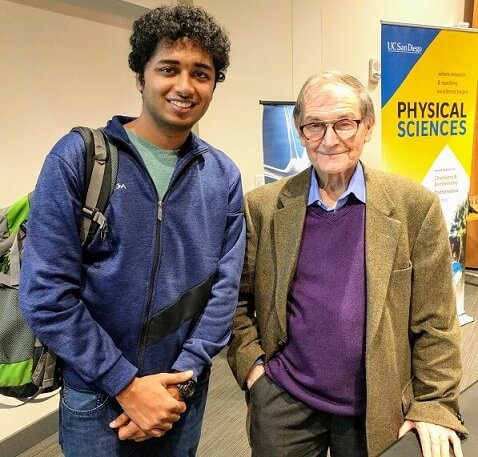On this fortuitous day when Sir Roger Penrose has been awarded the Nobel Prize in Physics for his research on black holes (some of which he did with Stephen Hawking), I am sure that many of my friends would be delighted to know about his connection with IIIT Allahabad.
One of my fond memories from the initial days at IIIT Allahabad is how I used to wonder about the rather perplexing yet simple and awe-inspiring architecture of the campus. Before taking admission, I had read somewhere on the university’s website that the campus and its buildings were modeled on Penrose architecture. During the first week at the university, it was surprising how one could reach Computer Center-1 (where our classes used to take place) and the library from many different paths when entering the campus from the main gate. After doing some research, I found out that the architecture of the campus and individual buildings were designed by Ashutosh Joshi, an architect, who took Penrose architecture as his inspiration. Those domes within buildings and the corridors were the nodes and connections respectively of the Penrose architecture, and so were the buildings themselves and the paths connecting them on the campus. IIIT Allahabad is perhaps the first and only institution in the world to be fully modeled on Penrose architecture.
Why Penrose architecture? Well, Penrose architecture investigated by Sir Roger Penrose in the 1970s resembles the aggregation of information in both simple and complex sequences. The concept has been used in information technology to illustrate how information is aggregated to encompass the range of all human activities. It is only fitting then that the MHRD decided to establish IIIT Allahabad at the forefront of information technology with the university’s ethos firmly established in its architecture as well.
In late 2018, Professor Penrose was visiting my lab at UC San Diego when I had the good fortune of meeting and having a fruitful discussion with him (he visited again in January 2020). A very warm personality and a true polymath—mathematician, physicist, and philosopher—he also has a keen interest in understanding consciousness and the human mind. It is because of his latter interest in addition to giving lectures in the university that he visited my lab twice in the past couple of years. He even gave a talk titled “Consciousness and quantum state collapse.”
While others present at the event were requesting him to sign their copies of his books, I approached him with an unusual request. I asked him if he could please sign an image of my alma mater, IIIT Allahabad. Hale and hearty at 87 then, he was visibly surprised at first. When I informed him about the reasoning behind the same and that I am an alumnus of IIIT Allahabad, he was delighted. Apparently, years ago he had heard that a university in India is under construction based on Penrose architecture but never got to know anything more. Thus, he asked me when the university became operational, how big is it, what does it specialize in, and other related questions. Fondly then, he signed the paper in my hand and continued to discuss more about my research in Neuroscience and Affective Computing.
I am so very delighted today to share the only copy of IIIT Allahabad’s image signed by Professor Penrose himself. Congratulations, Professor Penrose. You are indeed a wonderful human being, an extraordinary lecturer, and an exemplary researcher.


 The Democratization and Decimation of the Indian Constitution: A Contradiction
The Democratization and Decimation of the Indian Constitution: A Contradiction